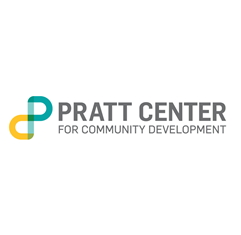Study discusses solutions for achieving the expansion of affordable housing without sacrificing high-paying industrial jobs. On May 8, 2015 the Pratt Center for Community Development released a study, “Making Room for Housing and Jobs”. The study analyzed the relationship between land use policies and the declining trend of industrial expansion across the city. The study also discussed the possible consequences of the Administration’s plans to add additional mixed-use districts which they hope will provide for the creation of new affordable housing. Earlier this month the City Council’s Land Use committee held an oversight hearing on land use policy, specifically, the protection of the city’s industrial sector.
Refuting the Bloomberg Administration’s belief the city has a surplus of vacant industrial space, the study examined 32 manufacturing businesses within an industrial district in the Greenpoint-Williamsburg area that was rezoned to mixed-use in 2005. After the rezoning, only 8 of the 32 industrial businesses remained. According to the study, the reason for this was an increase of residential and commercial entities entering the neighborhood leading to rent increases, which then forced industrial businesses out of the district. As these industrial businesses are displaced, so are the well-paying jobs they supply. The study argued these manufacturing jobs generally benefit individuals with limited educational backgrounds and English-speaking ability, and pay higher salaries than most of the replacement retail jobs.
In an effort to combat these effects, the study discussed two possible solutions: Vertical mixed-use and horizontal mixed-use. Current mixed-use zoning allows for vertical residential and industrial use if the residential portion is above the industrial. However, the study recognized the vertical model does not usually yield a substantial return on investment and produces other operational and administrative challenges. Operationally, issues arise when residential units are above an industrial business that operates 24 hours a day. Administratively, the City would need to increase enforcement to ensure that developers are properly adhering to the zoning regulations and not engaging in illegal, easily concealed, conversions. Ultimately, the study suggested the vertical mixed-use model presents significant hurdles in cost and should not be looked at for broad application.
The study’s second solution was a horizontal mixed-use scenario which focuses on implementing district-wide requirements for new development. The requirements would restrict residential development to vacant lots and pre-existing residential buildings. The study argued this will promote business expansion, and protect and maintain existing manufacturing space while enabling expansion. It will also allow for targeted residential development with mandatory affordable housing. While the horizontal scenario presents similar challenges as its vertical counterpart, the study suggests they can be overcome and recommends this scenario being applied in targeted and specific areas with light industry.
Several city Council Members have expressed their support for the ideas put forth by the study. In a statement Councilmember Rafael Espinal, who represents areas of East New York slated for rezoning, said “The new zoning tools proposed by the Pratt Center will help the council achieve the type of balanced, sustainable growth that our communities deserve. As East New York is the first neighborhood to be rezoned for development, I will also be working with [the New York City Economic Development Corporation], local groups, and industrial businesses to develop an action plan to address IBZ issues in the immediate area.” Councilmember Carlos Menchaca, who represents large portions of industrial districts in Red Hook, also gave his support of the Pratt plan.
Pratt Center for Community Development, Making Room For Housing And Jobs (May 4, 2015).
By: Matthew Walsh (Matthew is a student at New York Law School, Class of 2018).


